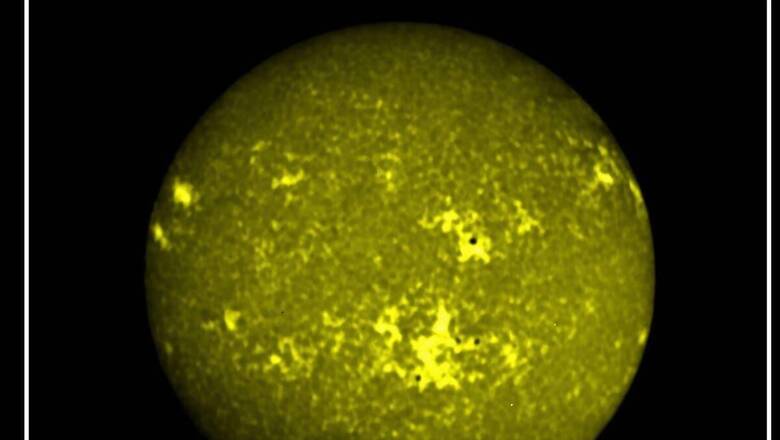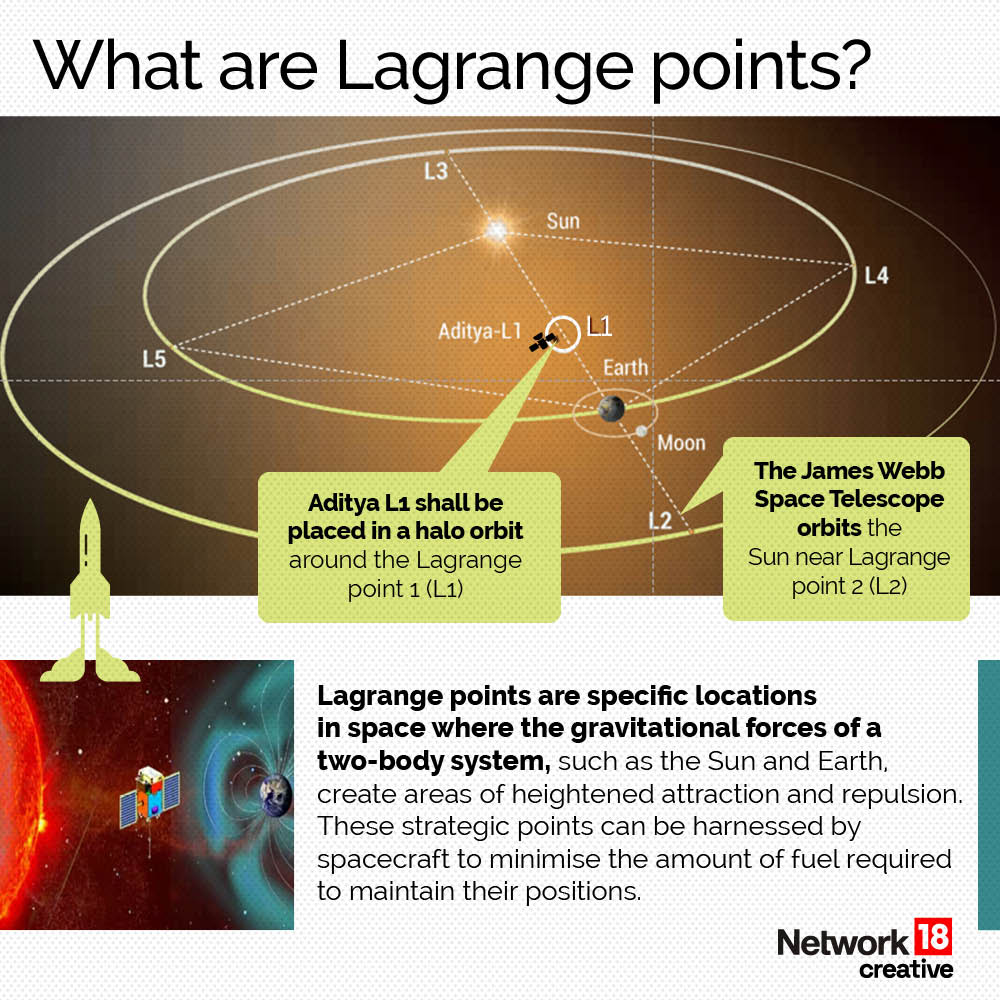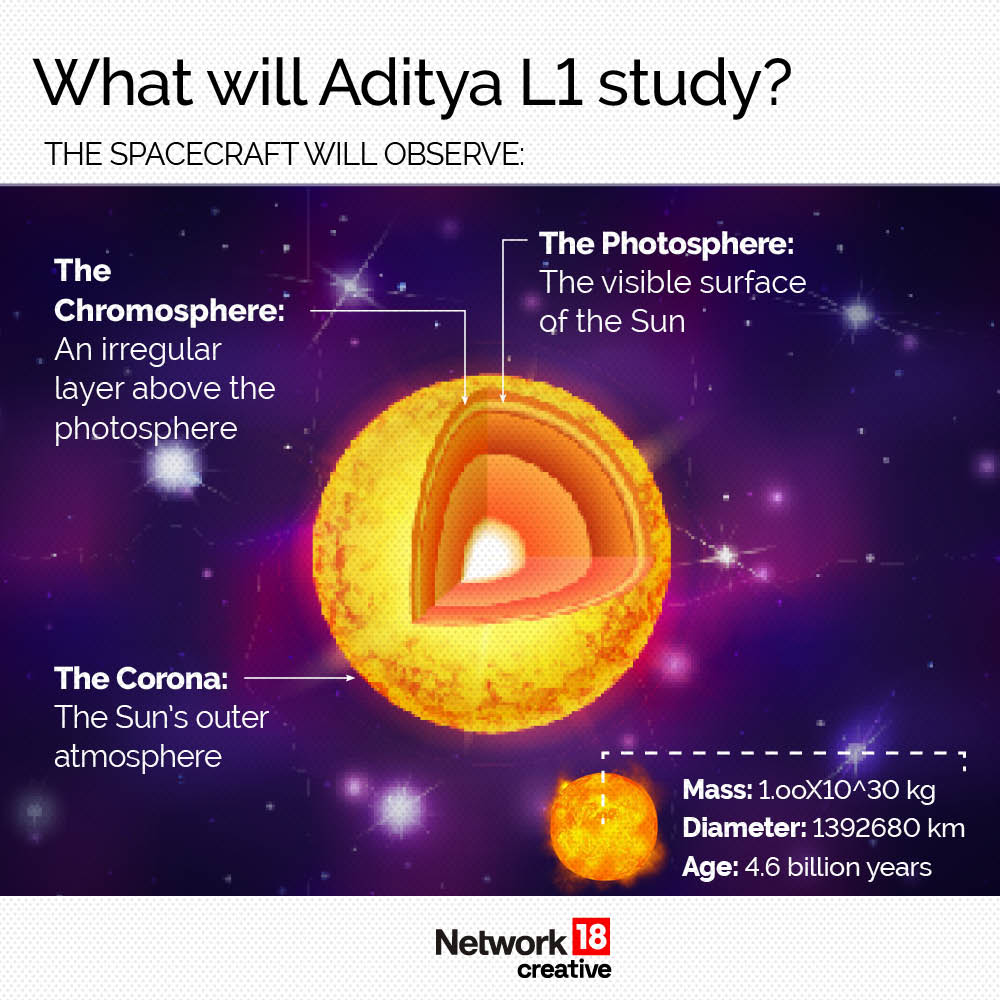
views
The Aditya-L1 spacecraft, which has been gliding through space for more than four months, successfully entered the final orbit, its desired destination on Saturday afternoon. India’s first-ever solar observatory will now make observations of the Sun for the next five years.
Praising the country’s scientists on the “extraordinary feat", Prime Minister Narendra Modi said the country will “continue to pursue new frontiers of science for the benefit of humanity".
India creates yet another landmark. India’s first solar observatory Aditya-L1 reaches it destination. It is a testament to the relentless dedication of our scientists in realising among the most complex and intricate space missions. I join the nation in applauding this…— Narendra Modi (@narendramodi) January 6, 2024
“India creates yet another landmark. India’s first solar observatory Aditya-L1 reaches it destination. It is a testament to the relentless dedication of our scientists in realising among the most complex and intricate space missions. I join the nation in applauding this extraordinary feat. We will continue to pursue new frontiers of science for the benefit of humanity," the prime minister posted on X.

ISRO said it has successfully placed Adiyta-L1 into its destination orbit Lagrange Point 1 of the Sun-Earth system, which is about 1.5 million km from the planet. It is about 1 percent of the total distance between the Earth and the Sun.
, . !Aditya-L1 has successfully entered the Halo orbit around the L1 point.#ISRO #AdityaL1Mission #AdityaL1 pic.twitter.com/6gwgz7XZQx
— ISRO InSight (@ISROSight) January 6, 2024
A satellite in a halo orbit around the L1 point has the major advantage of continuously viewing the Sun without any occultations/eclipses, ISRO officials said, adding, this will provide a greater advantage in observing solar activities and their effect on space weather in real time.
A Polar Satellite Launch Vehicle (PSLV-C57) launched the Aditya-L1 spacecraft from the second launch pad of Satish Dhawan Space Centre (SDSC), Sriharikota, on September 2, 2023. After a flight duration of 63 minutes and 20 seconds, it was successfully injected into an elliptical orbit of 235×19500 km around the Earth then. The spacecraft underwent a series of manoeuvres thereafter, and headed towards Sun-Earth L1, having escaped the Earth’s sphere of influence.
The spacecraft carries seven payloads to observe the photosphere, chromosphere and the outermost layers of the Sun (the corona) using electromagnetic and particle and magnetic field detectors. “Using the special vantage point L1, four payloads directly view the Sun and the remaining three payloads carry out in-situ studies of particles and fields at the Lagrange point L1, thus providing important scientific studies of the propagatory effect of solar dynamics in the interplanetary medium," as per the space agency.
All eyes on the main payload
ISRO will now wait for a few more days to switch on all the payloads to ensure a stable orbit with an unobstructed view of the Sun. All eyes are on Visible Emission Line Coronagraph (VELC), which will be switched on for the first time since the mission took off. Built by scientists from the Indian Institute of Astrophysics (IIA), Bengaluru, it is the main payload aboard Aditya L1.
“We will wait till January-end to switch on VELC, so we can safely capture the faint light of the Sun’s outer layer — Corona — by blocking the light from the main disk. That is the main goal. We have not opened its aperture because we did not want the mirrors to get affected by the molecular dust or disturbance when thrusters are fired during orbital insertion," said Professor R Ramesh from IIA Bengaluru.
The team has integrated an internal occulter in the payload — a shield that will separate out the light from the Sun’s disk and discard it. The remaining light from the Corona will then be studied. The instruments inside VELC are kept at 22 degress Celsius.
All seven instruments onboard will study different solar regions to seek answers to questions that have intrigued scientists for years – the birth of solar storms/flares, impact on space weather, vast temperature difference between the solar surface and its outer layer and several more.
“As Aditya L1 is far from the Sun, it gives VELC a unique vantage point to observe the Corona from an extended area, from where these solar storms actually originate," adds the senior scientist.
Now, full disk image of the Sun possible
The ISRO has a headstart now. It has already established a downlink with the satellite while it was in transit and collected data from the three payloads that were switched on. For Indian astrophysicists, it is the big moment that they all have been waiting for. For the first time, they will be able to capture the full disk image of the Sun using an indigenously built scientific instrument.
“All instruments onboard will need to work in tandem to help us do the science that we envisaged. For the first time, we will have a full disk image of the Sun captured by the SUIT instrument onboard (Solar Ultraviolet Imaging Telescope). It will strengthen our research to understand the activity on the solar surface and its atmosphere, especially how it influences the space weather, and then predict it accordingly," said Professor Dibyendu Nandi from IISER, Kolkata.

The first image captured on December 6 last year showed the Sun’s different layers — the photosphere and chromosphere in a wavelength of 200-400 nm using different scientific filters revealing the sunspots and other regions.
Apart from astronomical research, it is crucial to understand the Sun as it often ejects powerful charged particles that have the potential to damage electronic equipment on satellites. These large expulsions filled with magnetic energy are called coronal mass ejections (CME), which can cause malfunctioning of solar panels or scientific equipment onboard and interact with the Earth’s geo-magnetic fields.




















Comments
0 comment